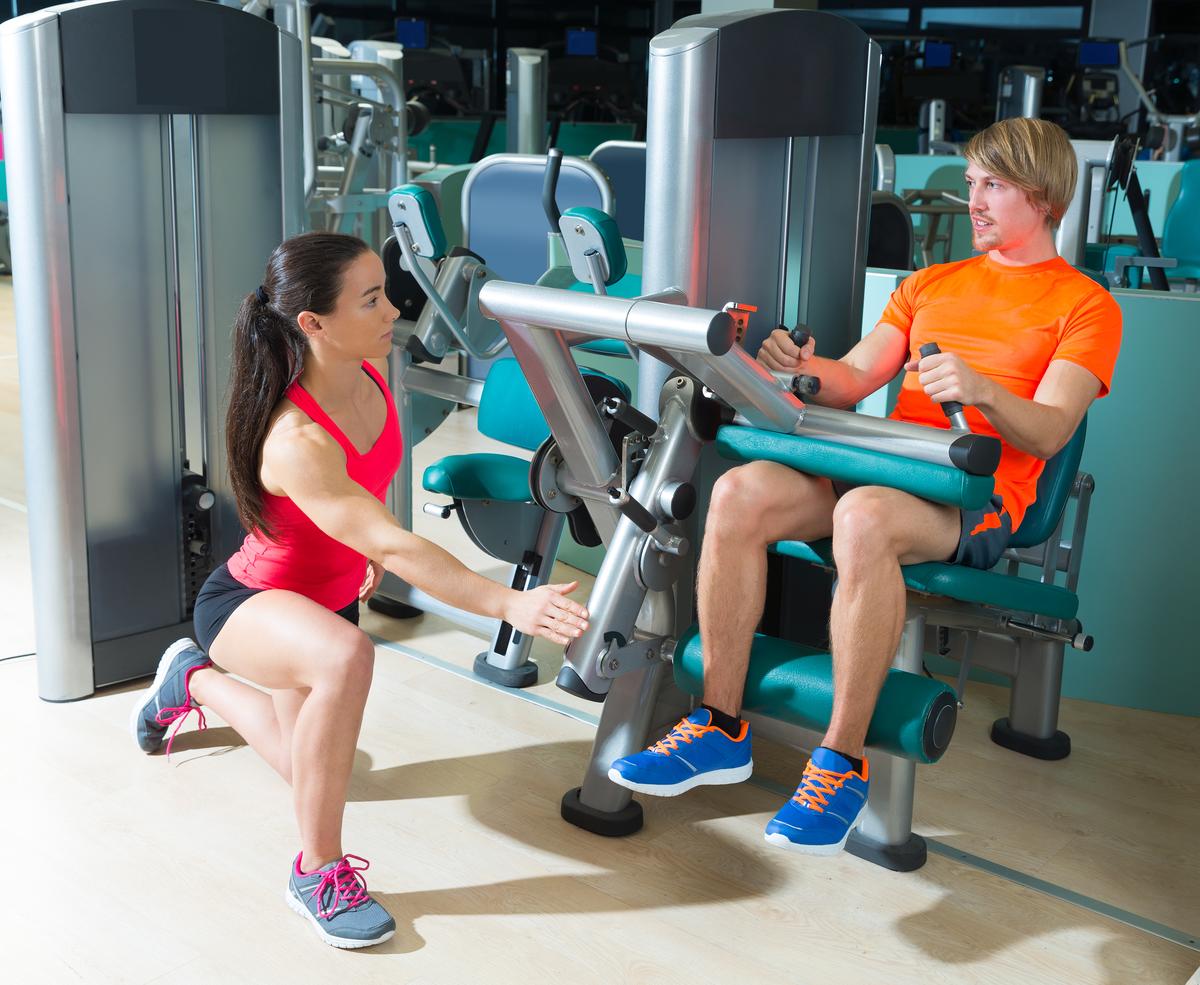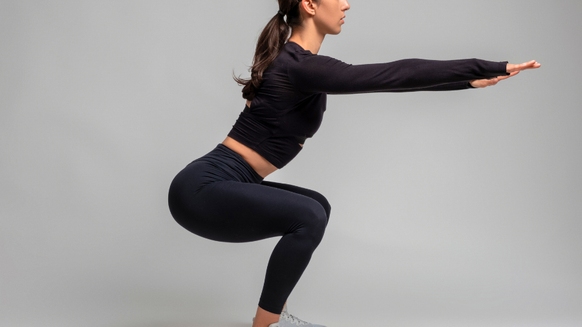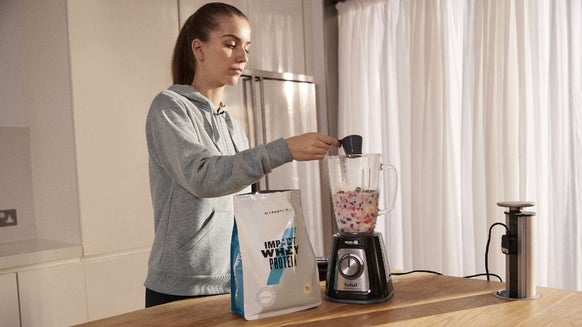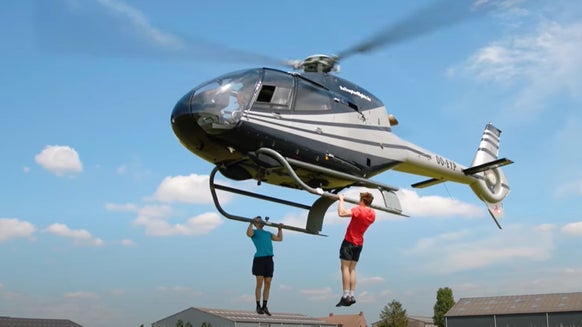
Whether you do it seated, or lying down, the leg curl is one of the best ways to isolate, strengthen and develop your hamstrings. The seated leg curl will not only increase your lower body strength, but it’s a great way to help prevent injury and improve your performance in other lifts and exercises.
Also known as the hamstring curl, it’s no surprise that it primarily works the hamstrings — one of three posterior muscles in between your hip and knee. Along with the glutes and calves, the hamstring provides key bodily functionalities, muscular stability and symmetry, as well as contributing significantly to athletic movements and performance.
The Anatomy of the Hamstring
Whilst it is commonly just known as the hamstring muscle, the hamstring is actually comprised of three muscles.
- Biceps femoris short head
- Biceps femoris long head
- Semimembranosus
All three play a vital role in movements such as squats, walking, running and essentially any lower body movements as these are the muscles that bend the knee during movements. Meanwhile, the biceps femoris long head and semimembranosus extend the hip joint in movements.
The Hamstring Curl | Seated Leg Curl Technique
- Take a seat on the machine with your back placed comfortably against the pad.
- Position your lower leg against the pad of the extended lever, adjust the lap pad so that it is securely holding your legs in position. The lap pad should be between the knees and the hip.
- Whilst your toes are facing forwards, make sure that your legs are levered in with the machine comfortably, but are also fully extended directly in front of you.
- Whilst breathing out (exhaling), flex your knees using just your hamstrings; this should pull the lever inwards. Continue to do so until the machine is pulled back far enough that it is almost hitting the back of your thighs.
- Throughout the movement, there should be no movement except your legs. Your upper body should be kept stationary throughout the entire movement.
- Ensure that your body is comfortable and stationary as doing otherwise could lead to lower back problems or hamstring strain.
- As the contraction is felt at the thigh muscle, squeeze and hold for a brief second before slowly (eccentrically) releasing back to the position you began with. Whilst you are doing so, inhale your breath as much as possible.
Common Mistakes
Rushing The Movement
The most common seated leg curl mistake is rushing through the motion. Many lifters curl the weight down and then let it spring back up very quickly.
This mistake steals your gains for two reasons. First, you eliminate the contraction of the hamstrings at the bottom of each rep. Second, you drastically reduce your time under tension.
Lifting Too Much Weight
Another mistake made during the seated hamstring curl is simply attempting to lift too much weight. If you feel your calves straining to dominate the motion, you are likely using too much weight. Your hamstrings actually respond much better to high volume training.
Not Enough Stimulus
Due to the fact that the hamstrings are one of the largest muscle groups in the body, they should be hit with a large amount of volume. Be sure to apply a sufficient amount of exercises, sets and reps that will adequately stimulate the hamstring muscles.
If you have again found yourself neglecting your hamstrings, apply the priority principle. Next time you train legs, maybe start with hamstrings so that you are focused on them and have the forefront of your energy stores at hand to use for them.
Benefits of Hamstring Training
Postural Benefits
Hamstrings stabilise the hip joints and will therefore keep the spine firmly aligned.
Athletic Performance
Due to the fact that hamstrings play a key role in knee flexion and hip extension, they are pretty much essential for running motion. Knee flexion and hip extension are also key in movements such as jumping, kicking, skipping and more.
Body Balance
Muscles often work in pairs. For example, hamstrings with quads, hamstrings with calves, hamstrings with glutes. If they work well together, they work in a complementary fashion. However, if one muscle is weak then this will detrimentally affect the other. This imbalance can lead to threatening injuries such as muscle strains and ligament tears.
Due to the fact that the hamstrings, in general, are weaker than the quads and somewhat less developed; this can eventually lead to ACL ruptures and problematic injuries. The ACL is one of the four ligaments in the knee and works closely with the knee, quads and hamstrings. Developing the hamstrings will not only improve the quad: hamstring ratio but will also give an element of stability across the knee joint and reduce the ACL from becoming vulnerable to tears and unnecessarily physically stressed.
Whilst key compound movements for the hamstrings include deadlifts, lunges, deadlift variations and bridges; the hamstring curl is the predominant isolation movement when looking to solely target the muscle alone.
Performed seated or standing, the hamstring curl is a key factor of any training program looking to develop the hamstrings or the legs in general.
Eccentric Training
An eccentric contraction or the negative phase of an exercise is the movement of a muscle whilst it is lengthening under resistance. Applying this method of eccentric work is known as eccentric training or negatives! Due to the fibres that make up the hamstrings, they are a muscle that reacts extremely well under the stimulus of eccentric work.
The next time you perform the hamstring curl, aim to perform the concentric (inwards phase) explosively for 1 second, whilst you slowly perform the eccentric (releasing phase) for 3 seconds. Remember to squeeze at the point of contraction…And to buy a wheelchair for after the workout!
Seated or Lying Leg Curl?
You can do the standard leg curl in a prone or seated position, with both needing the use of a machine. Whether you do it seated, or lying down, the leg curl is one of the best ways to isolate, strengthen and develop your hamstrings.
Lying leg curls will emphasise the outer of the hamstrings or more formally known as the biceps femoris head, whilst the seated leg curls will target the inner side of the hamstring.
Seated Leg Curl Variations & Alternative Exercises
1. Slider leg curl
Sliders are a great addition to your home gym set-up because you can use them for a variety of core-crunching exercises as well as machine-free leg curls.
Lie on your back with your heels on the sliders. Raise your hips into a bridge position where your body forms a straight line from knees to neck. Slowly slide your feet away from you until your legs are extended, keeping your hips off the floor and your core engaged throughout, then bring your feet back and return to the bridge position.
2. Gym ball leg curl
This variation will increase the core aspect of the leg curl. Simply lie on your back with your calves resting on a gym ball. Raise your hips and roll the ball towards you so your feet end up resting on top of the ball, then roll the ball away from you again.
3. Romanian Deadlift
The Romanian deadlift– sometimes called the straight-legged deadlift focuses on using the hamstrings – in contrast to other deadlifts which focus on your lower back.
When performing this deadlift, the back should remain straight with all bending coming from the torso – this means instead of bending the knees the legs should be stiff throughout the lowering and lifting phases of the movement.







